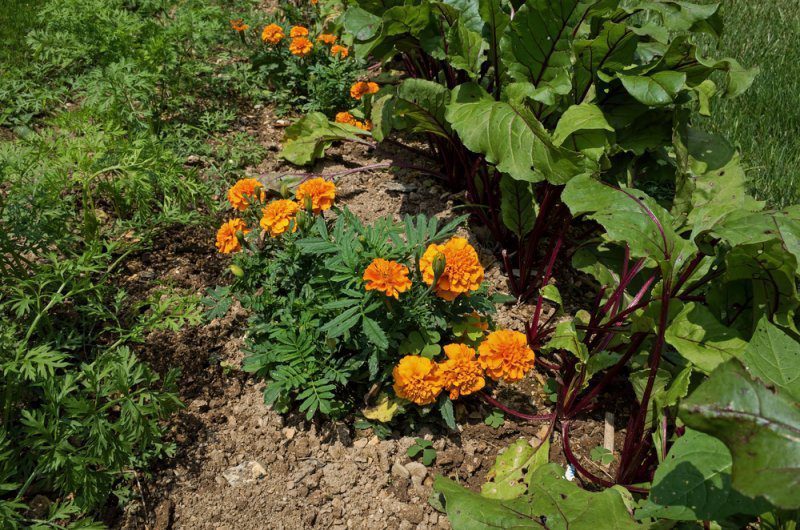The Marvelous Marigold: Savior of the Vegetable Garden

Something so beautiful, so spicy and easy to grow turns out to be the all-purpose helper in the garden: the marigold. Marigolds repel disease and insect pests, attract pollinators, and add a cheerful boarder around the vegetable patch and flower beds.
Almost every vegetable benefits from having marigolds as neighbors. Grandmother told us to plant marigolds next to the tomatoes.
Few of us really knew why.
It’s because marigolds prevent root knot nematodes. And this is disgusting, but it’s tiny eel-like worms that invade the roots, and make their homes in little galls. The symptoms above ground are yellowing leaves. It’s a particular problem where summers are hot, winters are long and there is sandy soil, like where I grew up in Minnesota. In any case, my grandmother always planted marigolds around the tomatoes. But marigolds also enhance the growth of broccoli, cabbage, cucumbers, eggplant, gourds, kale, potatoes, squash and basil. They repel certain beetles, leaf-hoppers and even some rabbits.

The roots of French marigolds produce a chemical that is so strong it acts as an effective pesticide even after the plants are gone.
Mexican, or Aztec marigolds, can have an even stronger scent. In some cases, the might kill off tender herbs, so it might be best to keep them at a distance from the herb garden.
Of course marigolds can also be eaten, and various kinds add a spicy or even sweet taste to foods. Some marigolds can be turned into insecticide sprays, just as pyrethrins come from chrysanthemums.
But most people are happy planting a ring of marigolds around the vegetables, or even alongside each row of vegetables.
Even a pot of marigolds on the edge of a garden plot will have a beneficial effect. Or snuggle a pot of marigolds up to your planter of patio tomatoes.
It couldn’t hurt.
